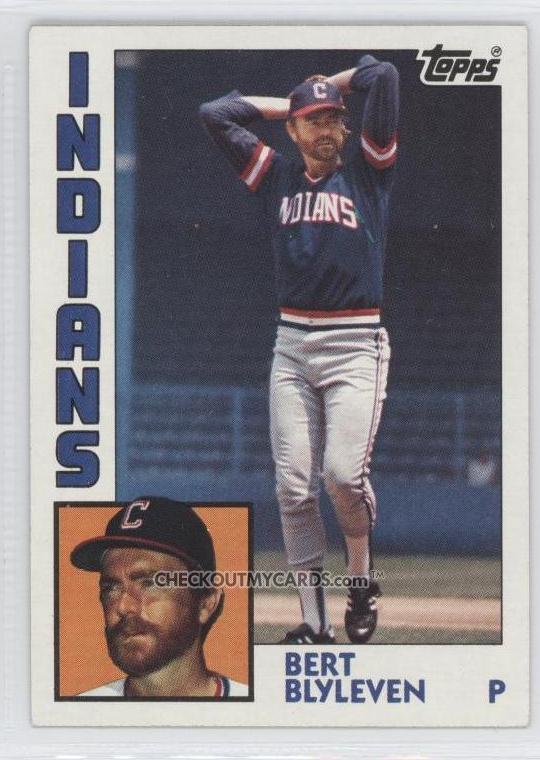 We’re seeing some nice media coverage of the gracious duo who will be inducted into the Baseball Hall of Fame in Cooperstown next month. And Roberto Alomar and Bert Blyleven will each enter the Hall having toiled for our Indians. The memory of Robbie is fresher, so let’s take a minute to recall the pitcher who was the ace of the staff at old Cleveland Municipal Stadium in the early 1980s.
We’re seeing some nice media coverage of the gracious duo who will be inducted into the Baseball Hall of Fame in Cooperstown next month. And Roberto Alomar and Bert Blyleven will each enter the Hall having toiled for our Indians. The memory of Robbie is fresher, so let’s take a minute to recall the pitcher who was the ace of the staff at old Cleveland Municipal Stadium in the early 1980s.
There are differences of opinion on whether Bert Blyleven should be enshrined in the Hall. My take on this is that among those who care a great deal, these differences lie on the fault line of fans who ‘feel’ what's right vs. those who ‘think’ they know the truth. To me, this seems similar to political debates. Let’s take a look.
The "Blyleven does not belong" crowd
They feel he was never a dominant major league pitcher. He never had the impact expected of a premier pitcher of his era (1970-1992). Sure, he would have been a nice #2 or #3 starter on any contending team. The naysayers will note he won 20 games only once, and even that season he lost 17. He never led the league in categories such as ERA or wins. He never won a Cy Young award. He finished his career with 287 wins- worthy of respect, but this was only 37 more games than he lost. If he looks like a Hall-of-Famer now, it’s partly because his era of eligibility falls in between two waves of top pitchers. He retired after Tom Seaver, Steve Carlton, Jim Palmer and Nolan Ryan - and before Roger Clemens, Greg Maddux, Randy Johnson, Pedro Martinez, Tom Glavine and John Smoltz. Basically, right now it’s Blyleven and Jack Morris. Bert Blyleven gave up a record 50 home runs in one season, for crying out loud- and allowed 46 the very next year!
The “put him in the Hall already” folks
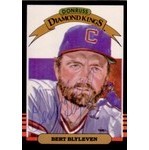 They think it’s high time justice prevailed, as the numbers speak for themselves. His ERA was better than the league average in 17 seasons of his career, and in 13 seasons, he had an ERA under 3.50. His career ERA was 3.31, and he had a 2.47 postseason ERA to boot (and whatever happened to a player‘s postseason resume influencing his legacy, by the way?). His statistics were favorable to premier contemporaries such as Ryan- this was due to the low number of walks issued by Blyleven. His strikeout:walk ratio was around 3:1- this contributed to his low ERAs. He struck out 3701 batters- that’s in the top five, all-time. He’d led his league in strikeouts. He led his league in shutouts three times (and is ninth all-time for career shutouts). In fact, in total, Bert Blyleven threw 60 shutouts. S-I-X-T-Y. He threw 242 complete games. (Nope, that’s not a typo. Kind of tough to average over 10 CG/season for that long if you aren‘t an exceptional pitcher over your entire career. And his career overlapped the current era of managers limiting the number of pitches of the starters). He led his league in innings pitched in two separate seasons, back-to-back. He was a Comeback Player of the Year once, and he threw a no-hitter early in his career. He pitched his best after the All-Star game during many seasons; this no doubt impacted the number of times he was selected to appear in the Midsummer Classic.
They think it’s high time justice prevailed, as the numbers speak for themselves. His ERA was better than the league average in 17 seasons of his career, and in 13 seasons, he had an ERA under 3.50. His career ERA was 3.31, and he had a 2.47 postseason ERA to boot (and whatever happened to a player‘s postseason resume influencing his legacy, by the way?). His statistics were favorable to premier contemporaries such as Ryan- this was due to the low number of walks issued by Blyleven. His strikeout:walk ratio was around 3:1- this contributed to his low ERAs. He struck out 3701 batters- that’s in the top five, all-time. He’d led his league in strikeouts. He led his league in shutouts three times (and is ninth all-time for career shutouts). In fact, in total, Bert Blyleven threw 60 shutouts. S-I-X-T-Y. He threw 242 complete games. (Nope, that’s not a typo. Kind of tough to average over 10 CG/season for that long if you aren‘t an exceptional pitcher over your entire career. And his career overlapped the current era of managers limiting the number of pitches of the starters). He led his league in innings pitched in two separate seasons, back-to-back. He was a Comeback Player of the Year once, and he threw a no-hitter early in his career. He pitched his best after the All-Star game during many seasons; this no doubt impacted the number of times he was selected to appear in the Midsummer Classic.
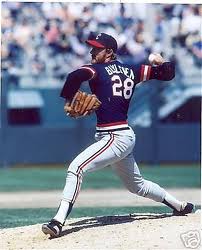 Thirty percent of his 250 losses were by one run, and 115 of his losses were by two runs or less. He won 15 games by a 1-0 score. And over his career, Blyeven was a member of several very poor baseball teams. He did finish as the top Cy Young vote-getter among starting pitchers one year. And if he’d have won a Cy Young, or won 13 more games and reached the magic 300-win mark, his election to the Hall would have been automatic.
Thirty percent of his 250 losses were by one run, and 115 of his losses were by two runs or less. He won 15 games by a 1-0 score. And over his career, Blyeven was a member of several very poor baseball teams. He did finish as the top Cy Young vote-getter among starting pitchers one year. And if he’d have won a Cy Young, or won 13 more games and reached the magic 300-win mark, his election to the Hall would have been automatic.
On top of all that, Bert Blyleven is acknowledged as having had one of the best curveballs in the history of baseball. He may be compared to a Sandy Koufax, or perhaps someone from a hundred years ago, but he is never unfavorably mentioned against any pitcher of his time. However, astute observers remind us that Blyleven actually threw two notable curveballs during his career. The pitch that looked like a fastball, then rose and dipped before crossing the plate- that was the one which was more likely to buckle the knees of the hitter. Blyleven threw this pitch until he suffered an arm injury while with the Indians, in 1982. After his return from the injury, he no longer threw that curveball but substituted a looping curve which broke straight down. It was an admirable pitch. But it was slower, and had a propensity to hang at times. This was when he began to yield more home runs; his homers-allowed numbers were fine before the injury.
In looking at Blyeven’s best seasons, one would do well to start with 1973. Palmer, Ryan, and Catfish Hunter finished 1-2-3 in the Cy Young voting. Blyleven compiled a 20-17 record for the Twins, and his 2.53 ERA was second to Palmer’s 2.40. His 1.117 WHIP was first among American League starters (disclaimer: WHIP is as fancy as I get on the stats- but SABR 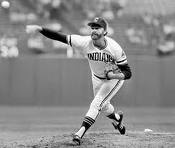 guys seem to be solidly behind Blyleven's Hall worthiness) . He had 25 complete games, and his 9 shutouts led the league. The 16 home runs he allowed were tied for the least allowed by all starters who garnered Cy Young votes. While Blyleven finished well behind the top three in Cy Young votes, his stats compared well to anyone’s- save perhaps Palmer‘s. But it was close. Blyleven had a Cy Young-type of season.
guys seem to be solidly behind Blyleven's Hall worthiness) . He had 25 complete games, and his 9 shutouts led the league. The 16 home runs he allowed were tied for the least allowed by all starters who garnered Cy Young votes. While Blyleven finished well behind the top three in Cy Young votes, his stats compared well to anyone’s- save perhaps Palmer‘s. But it was close. Blyleven had a Cy Young-type of season.
1989 was another fine season for Blyleven, as he went 17-5 with a 2.73 ERA and had a 1.116 WHIP for the California Angels. He finished fourth in the CyYoung voting, as Bret Saberhagen of Kansas City won the award. Dave Stewart of the Oakland A’s finished second, and the field finished much further back. Saberhagen definitely deserved the honor.
Blyleven has named his 1984 season with the Cleveland Indians as his best ever. He had come over to the Tribe from the Pittsburgh Pirates in 1980, and then had battled back from the 1982 arm injury. He was 19-7 in 1984- and missed five starts due to injuring his foot while clowning around, shagging thrown balls in the outfield during some down time. He ended up with a 2.87 ERA and a 1.135 WHIP. He finished third in the Cy Young voting that year- but was the top vote-getter among A.L. starters. Closers Willie Hernandez of the Tigers and Dan Quisenberry of the Royals finished 1-2. Many assume that if closers had been disqualified from winning the Cy Young award, Blyleven would have been the right choice. I actually heard a compelling argument that Dave Stieb should have won the Cy Young in 1984, as this was during his stretch of 4 or 5 consecutive seasons where he was the best starting pitcher in the American League. Regardless, if Blyleven thinks his 1984 season was better than his 1973 season, who am I to disagree?
The last several years have been frustrating for Bert Blyleven, as he has made his case for Hall of Fame inclusion. He also had wished to share the honor with his father, who unfortunately passed away several years after Blyleven first became eligible. My personal take? The reasons given at the top of this piece worked against him- but so did his attitude for much of his career. Here was a guy who openly grumbled about his situation at least three times during his career. He got himself traded from the Twins in 1976, and again after he flipped the bird to a camera during a nationally televised game while with Texas in 1977. He became disgruntled with the Pirates as he clashed with manager Chuck Tanner. He even threatened to retire. A major concern of Blyleven’s was the way Tanner would remove him (and all starters) from games due to expanded roles of the relief staff. Basically, the game was changing and Blyleven rebelled. Tanner actually called him “Cryleven”. He was traded to the Indians, and again expressed his unhappiness and was traded back to the Twins prior to reaching free agency after the 1985 season.
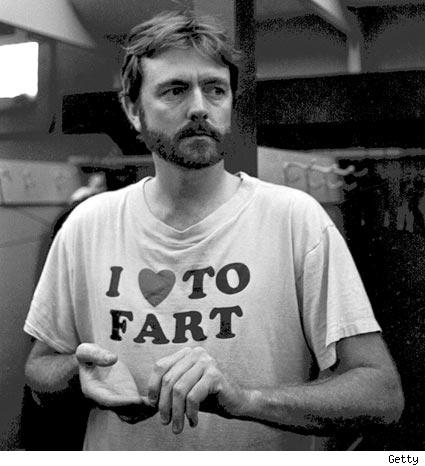 But you don’t hear a lot these days about Bert Blyleven, the troublemaker. As a great reminder to anyone in any walk of life, Bert Blyleven is remembered with a smile due to his sense of humor. Pranks are part of his image- such as crawling on nasty floors underneath dugout benches to light teammates’ shoelaces on fire (giving them the ‘hotfoot’- earning the nickname “The Frying Dutchman"). Also, cream pies in the face of teammates, scaring them with Halloween masks, and passing gas on command (hey, can‘t everyone do that?).
But you don’t hear a lot these days about Bert Blyleven, the troublemaker. As a great reminder to anyone in any walk of life, Bert Blyleven is remembered with a smile due to his sense of humor. Pranks are part of his image- such as crawling on nasty floors underneath dugout benches to light teammates’ shoelaces on fire (giving them the ‘hotfoot’- earning the nickname “The Frying Dutchman"). Also, cream pies in the face of teammates, scaring them with Halloween masks, and passing gas on command (hey, can‘t everyone do that?).
And he can take a gag as well. In 1986, after he yielded the record 50th home run that season, a clubhouse guy at the Hubert H Humphrey Metrodome (which the Twins shared with the Minnesota Golden Gophers football team) found the gopher mascot outfit. He put it on before walking onto the field to congratulate Blyleven after the win. The gopher was celebrating Blyleven’s ‘gopher-ball’ record, and the pitcher laughed as loudly as anyone.
Adding to Blyleven's baseball image is the famous nickname given to him by ESPN commentator Chris Berman. It remains the only counterbalance to my urge to punch the irritating Berman in the nose whenever he runs his mouth: Bert “Be Home” Blyleven.
These days, Blyleven remains a Minnesota favorite, as a Twins television announcer. He ‘circles’ fans with the telestrator during broadcasts, causing many to carry signs to games requesting, “Circle Me, Bert”.
And now, he is a Hall of Fame pitcher.
Thank you for reading. Next week: Blast From The Past: Albert Belle.